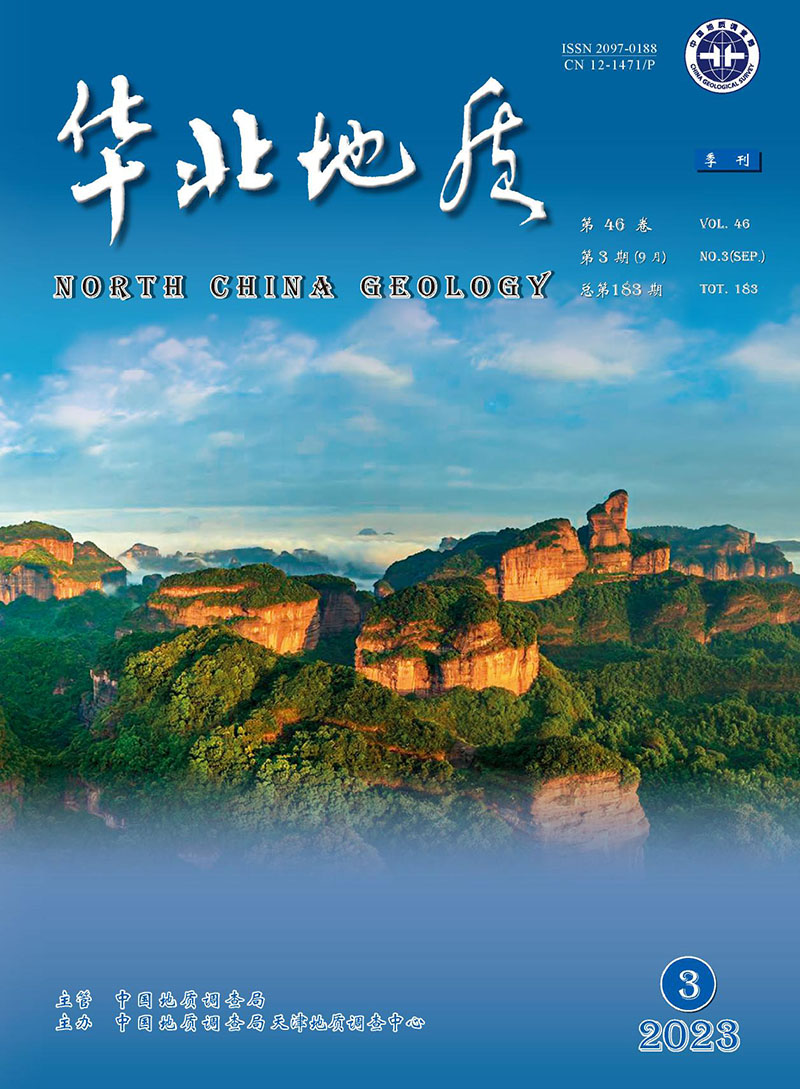|
[1]
|
蒋万军,孟利山,柳富田,等.张家口地区地下水资源与环境质量现状及开发利用保护建议[J].华北地质,2022,45(3):44-54.
Google Scholar
|
|
[2]
|
刘圣锋,黄军,周媛,等.广西容县地下水水质调查与健康风险评价[J].人民珠江,2019,40(12):6-12.
Google Scholar
|
|
[3]
|
WANG J, LIU G, LIU H, et al.Multivariate statistical evaluation of dissolved trace elements and a water quality assessment in the middle reaches of Huaihe River, Anhui, China[J].Science of the Total Environment, 2017, 583:421-431.
Google Scholar
|
|
[4]
|
WANG J, LI Y, HUANG J, et al. Growing water scarcity, food security and government responses in China [J]. Clobal Food Security, 2017, 14:9-17.
Google Scholar
|
|
[5]
|
刘斯文,黄园英,赵文博,等.赣南北部黄陂河流域离子型稀土矿地区水质与健康风险评价, 岩矿测试[J].环境化学,2022,41(3):488-498.
Google Scholar
|
|
[6]
|
孙岐发,杨柯,孙茁桉,等.长春新区地下水水质特征及其对生态健康的评价[J].中国地质,2022,49(3):834-848.
Google Scholar
|
|
[7]
|
陈仁祥,高杨,宋勇,等.龙南足洞稀土矿区地下水水质特征及健康风险评价[J].有色金属(矿山部分),2021,73(3):111-118.
Google Scholar
|
|
[8]
|
李世龙,熊建华,邓超冰,等.西江流域柳江水体重金属污染状况及健康风险评价[J].广西科学,2018,25(4):393-399.
Google Scholar
|
|
[9]
|
林荩,梁文静,焦旸,等.陕西潼关县金矿矿区周边农田土壤重金属生态健康风险评价[J].中国地质,2021,48(3):749-763.
Google Scholar
|
|
[10]
|
周巾枚,蒋忠诚,徐光黎,等.崇左响水地区地下水水质分析及健康风险评价[J].环境科学,2019,40(6):2675-2685.
Google Scholar
|
|
[11]
|
杨彦,于云江,魏伟伟,等.常州市浅层地下水重金属污染对城区、城郊居民健康风险评价[J].环境化学,2013,32(2):202-211.
Google Scholar
|
|
[12]
|
章艳红,陈俊华,张卫民,等.抚河南昌段地表水中重金属污染及健康风险评价[J].东华理工大学学报(自然科学版),2022,45(6):589-597.
Google Scholar
|
|
[13]
|
赵春红,申豪勇,赵一,等.汾河流域地表水金属元素分布特征与健康风险评价[J].环境化学,2024,43(2):75-77.
Google Scholar
|
|
[14]
|
USEPA. Integrated Risk Information System[EB/OL].2010-08-23.http://cfpub.epa.Gov/ncea/iris/index.cfm.
Google Scholar
|
|
[15]
|
U.S.Department of Energy.The Risk Assessment Information System[EB/OL]. 2010 -08-23 . http://rais. ornl. Gov/tox/rap_toxp.shtml.
Google Scholar
|
|
[16]
|
USEPA. 2005. Guidelines for Carcinogen Risk Assessment[EB/OL].EPA/630/P-03/001F.http://www.epa.gov.
Google Scholar
|
|
[17]
|
周星宇.珠江三角洲典型区域地表水影响下地下水砷的释放规律及健康风险评价[D].广州:广州大学,2016.
Google Scholar
|
|
[18]
|
李华.资源枯竭城市地质环境代价初步核算及转型路径研究-以冷水江市为例[D].北京:中国地质大学(北京),2016.
Google Scholar
|
|
[19]
|
毛宽振.典型矿区地下水重金属关联特征及污染风险评价[D].河北:石家庄经济学院,2015.
Google Scholar
|
|
[20]
|
段小丽,聂静,王宗爽,等.健康风险评价中人体暴露参数的国内外研究概况[J].环境与健康杂志,2009,26(4):370-373.
Google Scholar
|
|
[21]
|
杨彦,于云江,李定龙,等.温岭地区人群呼吸暴露参数研究[J].环境与健康杂志,2011,28(8):698-70.
Google Scholar
|
|
[22]
|
杨彦,于云江,魏伟伟,等.常州市浅层地下水重金属污染对城区, 城郊居民健康风险评价[J].环境化学,2013,32(2):202-211.
Google Scholar
|
|
[23]
|
吴文晖,邹辉,朱岗辉,等.湘中某矿区地下水重金属污染特征及健康风险评估[J].生态与农村环境学报,2018,34(11):1027-1033.
Google Scholar
|
|
[24]
|
佘玮,揭雨成,邢虎成,等.湖南冷水江锑矿区苎麻对重金属的吸收和富集特性[J].农业环境科学学报,2010,29(1):91-96.
Google Scholar
|
|
[25]
|
莫昌琍,吴丰昌,符志友,等.湖南锡矿山锑矿区农用土壤锑、砷及汞的污染状况初探[J].矿物学报,2013,33(3):344-350.
Google Scholar
|
|
[26]
|
李雪华.锑矿区沉积物生态风险评价及修复技术研究[D].北京:北京林业大学,2013.
Google Scholar
|
|
[27]
|
雷鸣,曾敏,郑袁明,等.湖南采矿区和冶炼区水稻土重金属污染及其潜在风险评价[J].环境科学学报,2008,28(6):1212-1220.
Google Scholar
|
|
[28]
|
吕炳旭.金属矿山地下水重金属污染特征及评价方法研究[D].石家庄:石家庄经济学院,2012.
Google Scholar
|
|
[29]
|
谢淑容,彭渤.湖南锡矿山土壤重金属污染评价[J].云南地理环境研究,2007,19(4):128-132.
Google Scholar
|
|
[30]
|
佘玮,揭雨成,邢虎成,等.湖南冷水江锑矿区苎麻对重金属的吸收和富集特性[J].农业环境科学学报,2010,29(1):91-96.
Google Scholar
|
|
[31]
|
王金哲,张光辉,申建梅,等.地下水功能评价指标选取依据与原则的讨论[J].水文地质工程地质,2008,35(2):76-81.
Google Scholar
|
|
[32]
|
白德荣.地下水功能评价指标选取依据与原则的讨论[J].内蒙古科技与经济,2009,(22):370-372.
Google Scholar
|
|
[33]
|
艾提业古丽·热西提,麦麦提吐尔逊·艾则孜,王维维,等.博斯腾湖流域地下水重金属污染的人体健康风险评估[J].生态毒理学报,2019,14(2):251-259.
Google Scholar
|
|
[34]
|
郭杏妹,李宁,康园,等.佛山市农村饮用水中重金属的健康风险评价[J].暨南大学学报(自然科学与医学版),2014,35(1):21-25.
Google Scholar
|
|
[35]
|
刘楠,陈盟,高东东,等.德阳市平原区浅层地下水水化学特征与健康风险评价[J/OL].环境科学, https://doi.org/10.13227/j.hjkx.2023, 05110.
Google Scholar
|
|
[36]
|
冉敏,任凌燕,袁露瑜,等.城市供水水源地洞塘水库水质健康风险分析[J].环境化学,2020,06(02):243-244.
Google Scholar
|
|
[37]
|
王兰化,李明明,张鸾,等.某废弃化工场地地下水有机污染健康风险评价[J].地质调查研究,2012,35(4):293-298.
Google Scholar
|
|
[38]
|
李鸣晓,安达,杨昱,等.白洋淀淀中村非规范垃圾堆放地下水污染健康风险评价[J].环境工程技术学报,2012,2(5):449-455.
Google Scholar
|
|
[39]
|
赖书雅,董秋瑶,宋超,等.河南省桐柏-泌阳地区表层土壤钒和钴的分布特征及健康风险评价[J].中国地质,2023,50(1):222-236.
Google Scholar
|
|
[40]
|
田素军,李志博.重金属污染场地调查与健康风险评估:个案研究[J].安全与环境工程,2010,17(3):32-35.
Google Scholar
|
|
[41]
|
吉玉洁.韩城市饮水型氟病区改水前后水质及健康风险评价[D].陕西:长安大学,2021.
Google Scholar
|
|
[42]
|
陈洁.苏州市某电镀遗留场地重金属健康风险评价[D].江苏:苏州科技大学,2018.
Google Scholar
|
|
[43]
|
杨幸,黄沛瑜.黔江区供水水源地水质健康风险评价[J].北方环境,2011,(5):147-148.
Google Scholar
|
|
[44]
|
邓安琪,董兆敏,高群,等.中国地下水砷健康风险评价[J].中国环境科学,2017,37(9):3556-3565.
Google Scholar
|
|
[45]
|
王酤,刘少卿,陈晓民,等.健康风险评价中中国人皮肤暴露面积的估算[J].安全与环境学报,2008,8(4):152-156.
Google Scholar
|
|
[46]
|
王晨希,黄晶,杨紫薇,等.长江镇江段饮用水体中重金属污染现状特征及其健康风险研究[J].生物化工,2023,9(2):133-136.
Google Scholar
|
|
[47]
|
周巾枚,蒋忠诚,徐光黎,等.崇左响水地区地下水水质分析及健康风险评价[J].环境科学,2019,40(6):2675-2685.
Google Scholar
|






 DownLoad:
DownLoad: